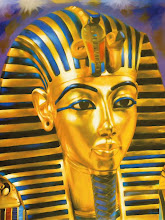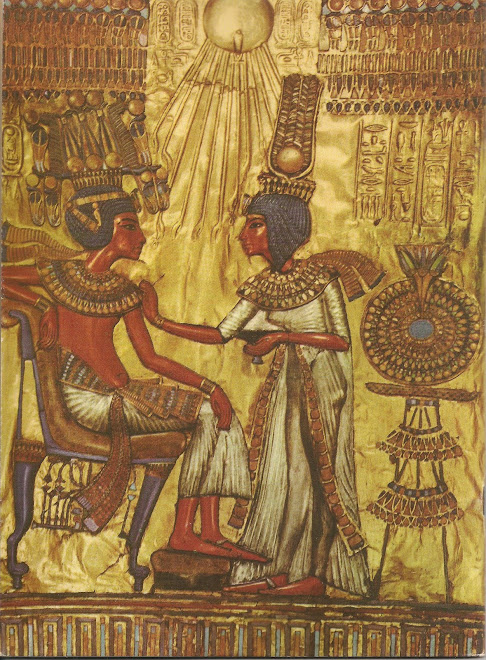quinta-feira, 3 de novembro de 2011
O Código Da Vinci
About The Novel:
The Da Vinci Code is a 2003 mystery-detective novel written by Dan Brown. It follows symbologist Robert Langdon and Sophie Neveu as they investigate a murder in Paris's Louvre Museum and discover a battle between the Priory of Sion and Opus Dei over the possibility of Jesus having been married to Mary Magdalene. The title of the novel refers to, among other things, the fact that the murder victim is found in the Grand Gallery of the Louvre, naked and posed like Leonardo da Vinci's famous drawing, the Vitruvian Man, with a cryptic message written beside his body and a pentacle drawn on his chest in his own blood.
The novel is part of the exploration of alternative religious history, whose central plot point is that the Merovingian kings of France were descendants from the bloodline of Jesus Christ and Mary Magdalene, ideas derived from Clive Prince's The Templar Revelation and books by Margaret Starbird. Chapter 60 of the book also references another book, The Holy Blood and the Holy Grail though Dan Brown has stated that this was not used as research material.
The book has provoked a popular interest in speculation concerning the Holy Grail legend and Magdalene's role in the history of Christianity. The book has been extensively denounced by many Christian denominations as an attack on the Roman Catholic Church. It has also been consistently criticized for its historical and scientific inaccuracies. The novel nonetheless became a worldwide bestseller that sold 80 million copies as of 2009[update][1] and has been translated into 44 languages. This makes it, as of 2010, the best selling English language novel of the 21st century and the second biggest selling novel of the 21st century in any language. Combining the detective, thriller, and conspiracy fiction genres, it is Brown's second novel to include the character Robert Langdon, the first being his 2000 novel Angels & Demons. In November 2004, Random House published a Special Illustrated Edition with 160 illustrations. In 2006, a film adaptation was released by Sony's Columbia Pictures.
Secret of the Holy Grail
In the novel Leigh Teabing explains to Sophie Neveu that the figure at the right hand of Jesus in Leonardo da Vinci's painting of "The Last Supper" is not the apostle John, but actually Mary Magdalene. Leigh Teabing says that the absence of a chalice in Leonardo's painting means Leonardo knew that Mary Magdalene was the actual Holy Grail and the bearer of Jesus' blood . Leigh Teabing goes on to explain that this idea is supported by the shape of the letter "V" that is formed by the bodily positions of Jesus and Mary, as "V" is the symbol for the sacred feminine. The absence of the Apostle John in the painting is explained by knowing that John is also referred to as "the Disciple Jesus loved", code for Mary Magdalene. The book also notes that the color scheme of their garments are inverted: Jesus wears a red tunic with royal blue cloak; John/Magdalene wears the opposite.
According to the novel, the secrets of the Holy Grail, as kept by the Priory of Sion are as follows:
The Holy Grail is not a physical chalice, but a woman, namely Mary Magdalene, who carried the bloodline of Christ.
The Old French expression for the Holy Grail, San gréal, actually is a play on Sang réal, which literally means "royal blood" in Old French.
The Grail relics consist of the documents that testify to the bloodline, as well as the actual bones of Mary Magdalene.
The Grail relics of Mary Magdalene were hidden by the Priory of Sion in a secret crypt, perhaps beneath Rosslyn Chapel.
The Church has suppressed the truth about Mary Magdalene and the Jesus bloodline for 2000 years. This is principally because they fear the power of the sacred feminine in and of itself and because this would challenge the primacy of Saint Peter as an apostle.
Mary Magdalene was of royal descent (through the Jewish House of Benjamin) and was the wife of Jesus, of the House of David. That she was a prostitute was slander invented by the Church to obscure their true relationship. At the time of the Crucifixion, she was pregnant. After the Crucifixion, she fled to Gaul, where she was sheltered by the Jews of Marseille. She gave birth to a daughter, named Sarah. The bloodline of Jesus and Mary Magdalene became the Merovingian dynasty of France.
The existence of the bloodline was the secret that was contained in the documents discovered by the Crusaders after they conquered Jerusalem in 1099 (see Kingdom of Jerusalem). The Priory of Sion and the Knights Templar were organized to keep the secret.
The secrets of the Grail are connected, according to the novel, to Leonardo Da Vinci's work as follows:
Leonardo was a member of the Priory of Sion and knew the secret of the Grail. The secret is in fact revealed in The Last Supper, in which no actual chalice is present at the table. The figure seated next to Christ is not a man, but a woman, his wife Mary Magdalene. Most reproductions of the work are from a later alteration that obscured her obvious female characteristics.
The androgyny of the Mona Lisa reflects the sacred union of male and female implied in the holy union of Jesus and Mary Magdalene. Such parity between the cosmic forces of masculine and feminine has long been a deep threat to the established power of the Church. The name Mona Lisa is actually an anagram for "Amon L'Isa", referring to the father and mother gods of Ancient Egyptian religion (namely Amun and Isis).
Extracts Taken From Wikipedia
More (related) Info:
http://www.danbrown.com/
http://en.wikipedia.org/wiki/Dan_Brown
http://www.leonardo3.net/leonardo/home_eng.htm
http://en.wikipedia.org/wiki/Leonardo_da_Vinci
Subscrever:
Enviar feedback (Atom)



.jpg)
.jpg)









+001.jpg)


+001.jpg)
+001.jpg)
+001.jpg)






+001.jpg)
+001.jpg)





+001.jpg)



+001.jpg)

+001.jpg)

+001.jpg)
+001.jpg)
.jpg)



Sem comentários:
Enviar um comentário
Nota: só um membro deste blogue pode publicar um comentário.